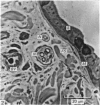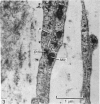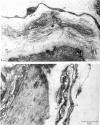Abstract
Electron microscopical studies of the sweat glands of the body surface of the cow, sheep, goat and cat demonstrated that there were few nerves or blood vessels near the glands. No varicosities were found within 10 micron of the glands, and the small number of unmyelinated nerve bundles traced were over 1.5 micron from the glandular myoepithelium, and situated outside a fibrocyte sheath surrounding the glands. It was concluded that the sweat glands of these species are not innervated. Unmyelinated nerve fibres were more abundant around, and were closer to, the sweat glands of man, the horse and cat footpads, and varicosities were observed within the fibrocyte sheath close enough to have a direct influence on the glands. It is postulated from the comparative evidence that the basic sudomotor mechanism is the same in all species, involving the action of adrenergic and cholinergic nerves on the cutaneous blood vessels and local catecholamine transfer to the gland; and that in species such as man where the blood supply and sympathetic nerves are in close proximity to the glands, transmitters released at the sympathetic nerve endings, in particular acetylcholine, will, in addition, have a direct action on the glands.
Full text
PDF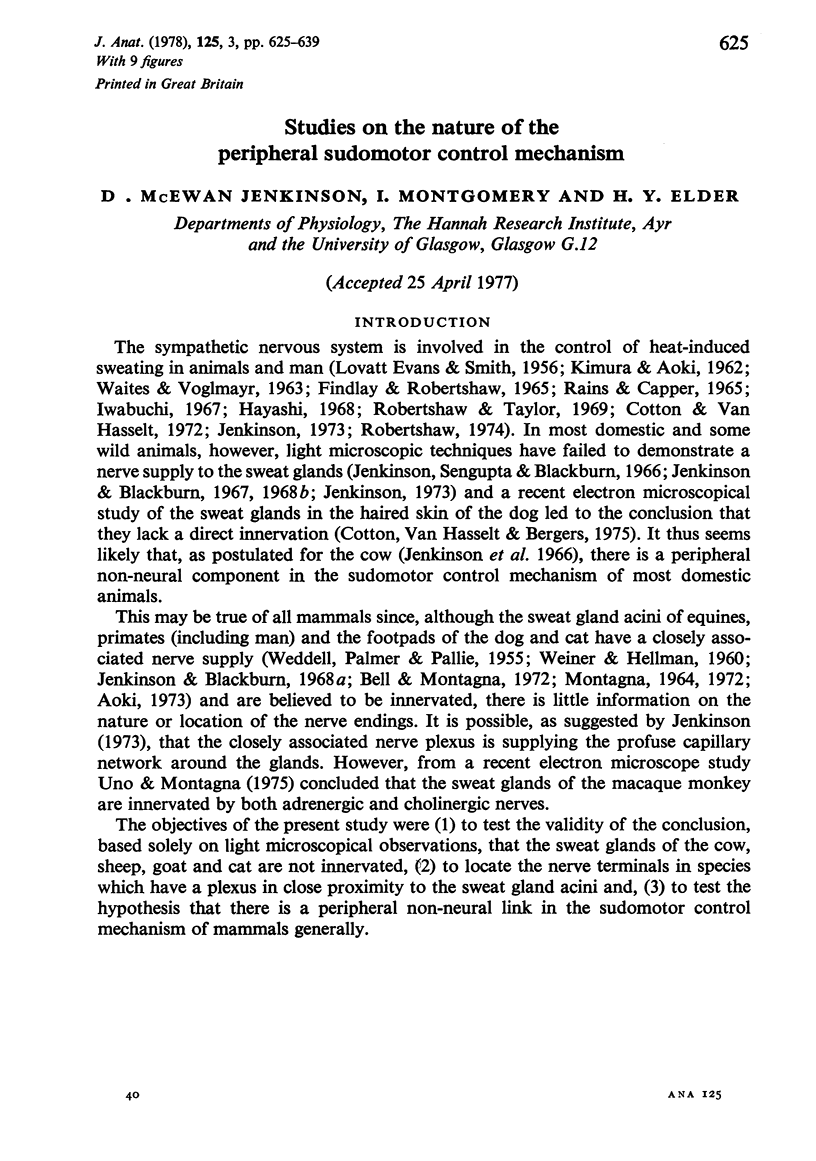
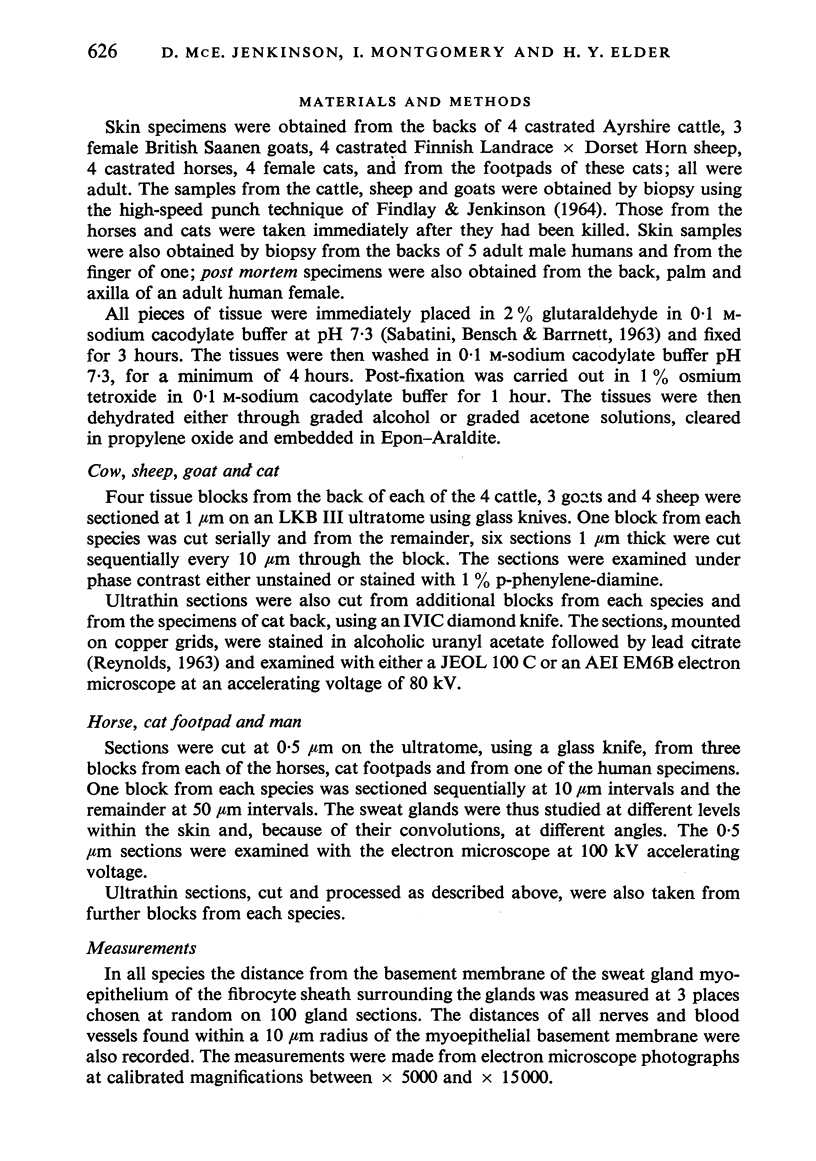
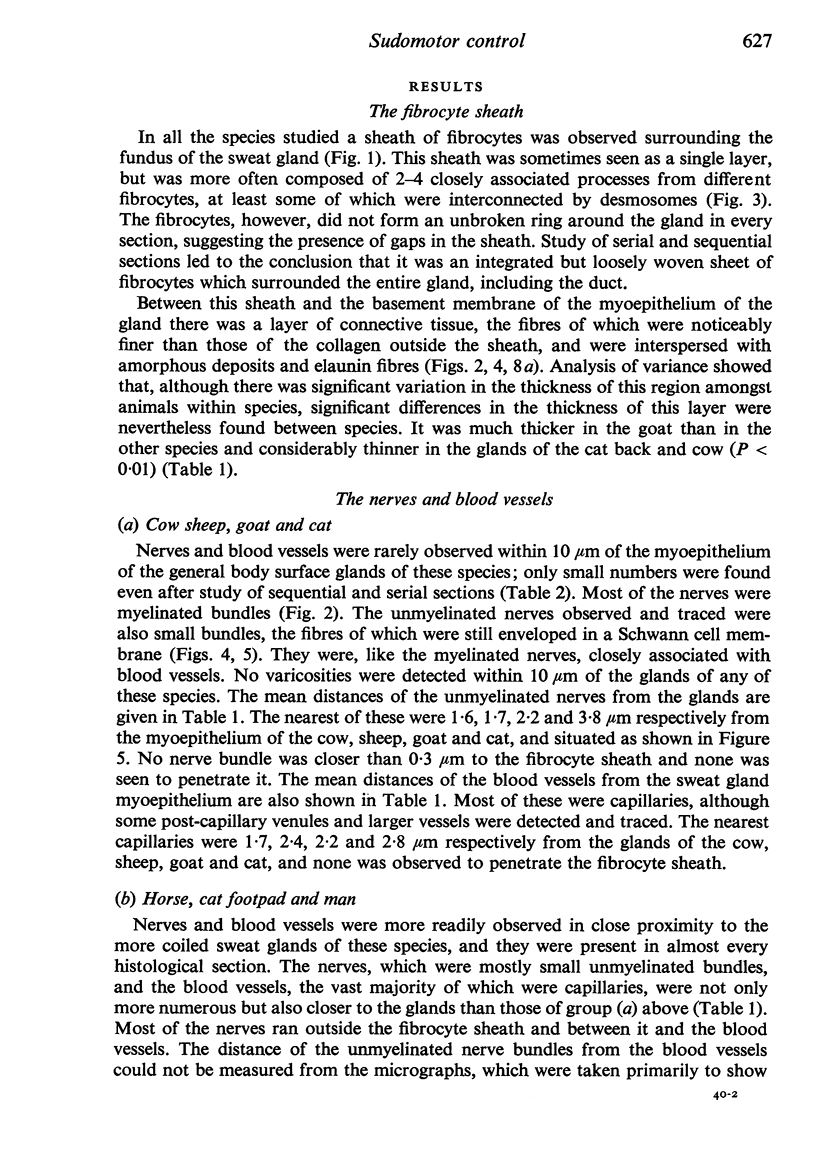
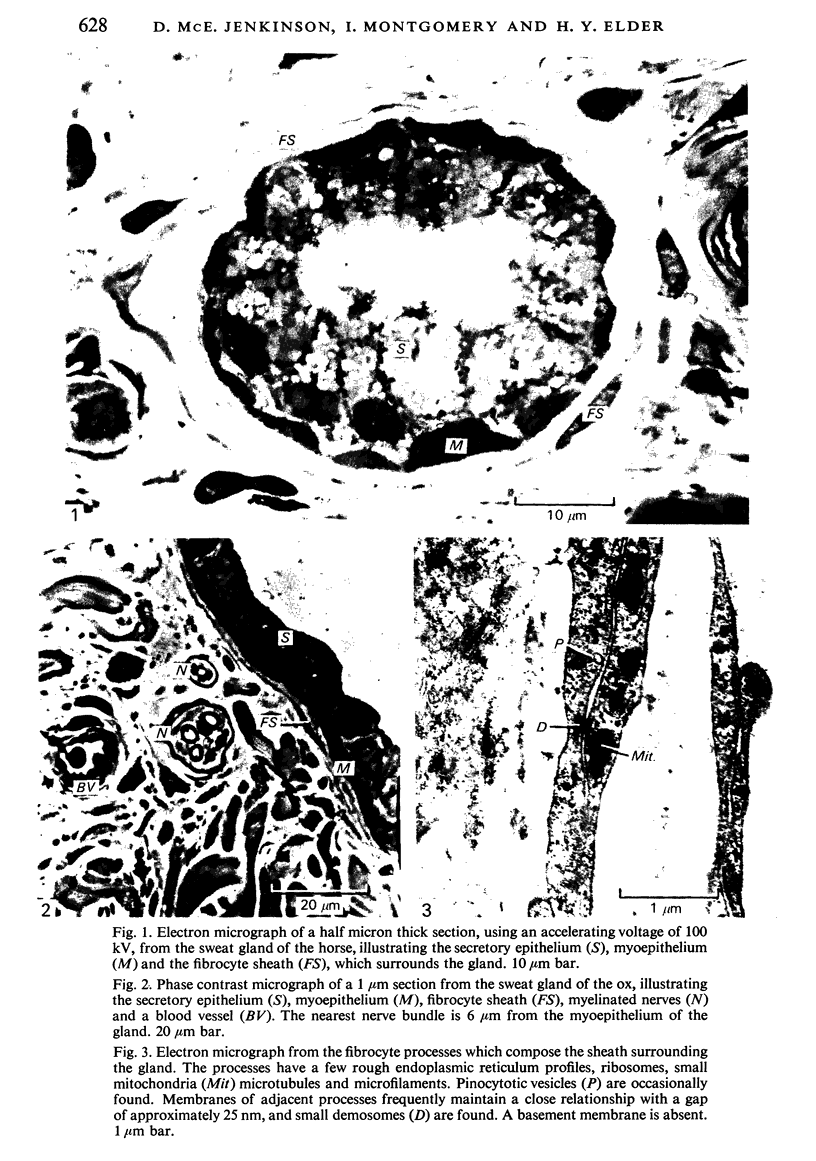
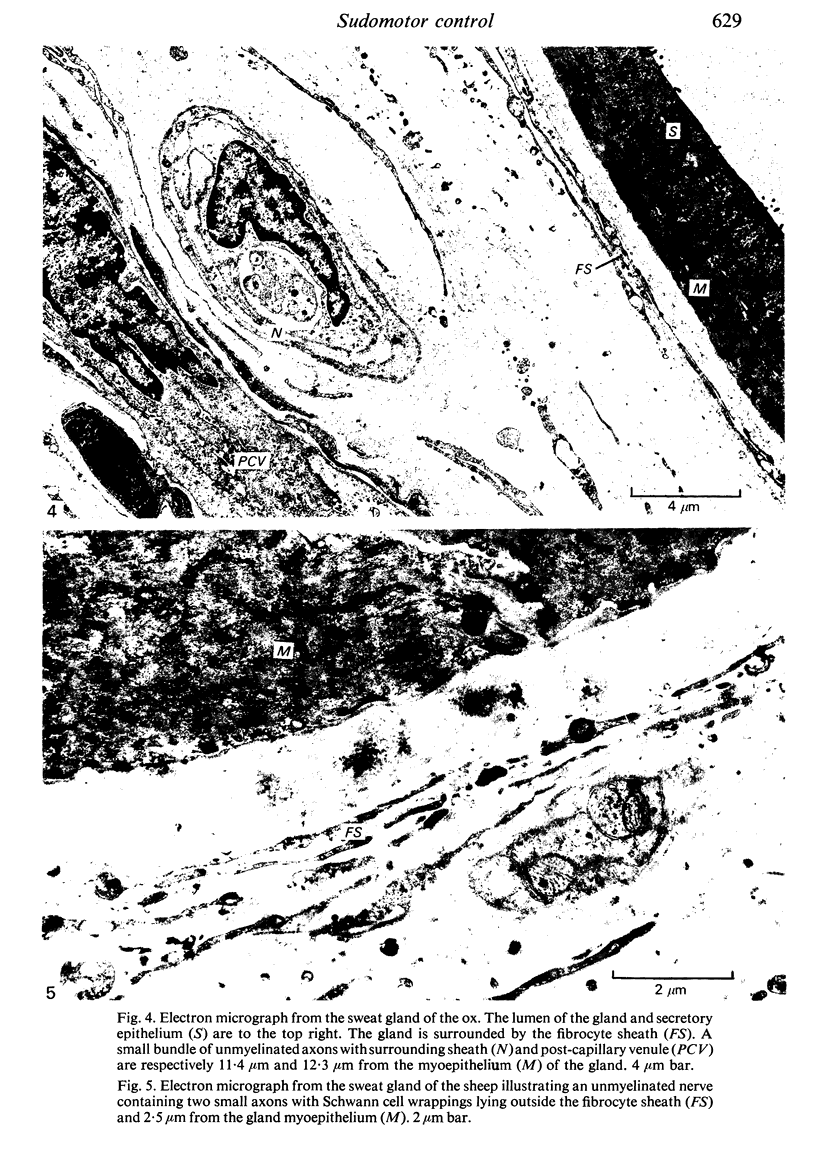
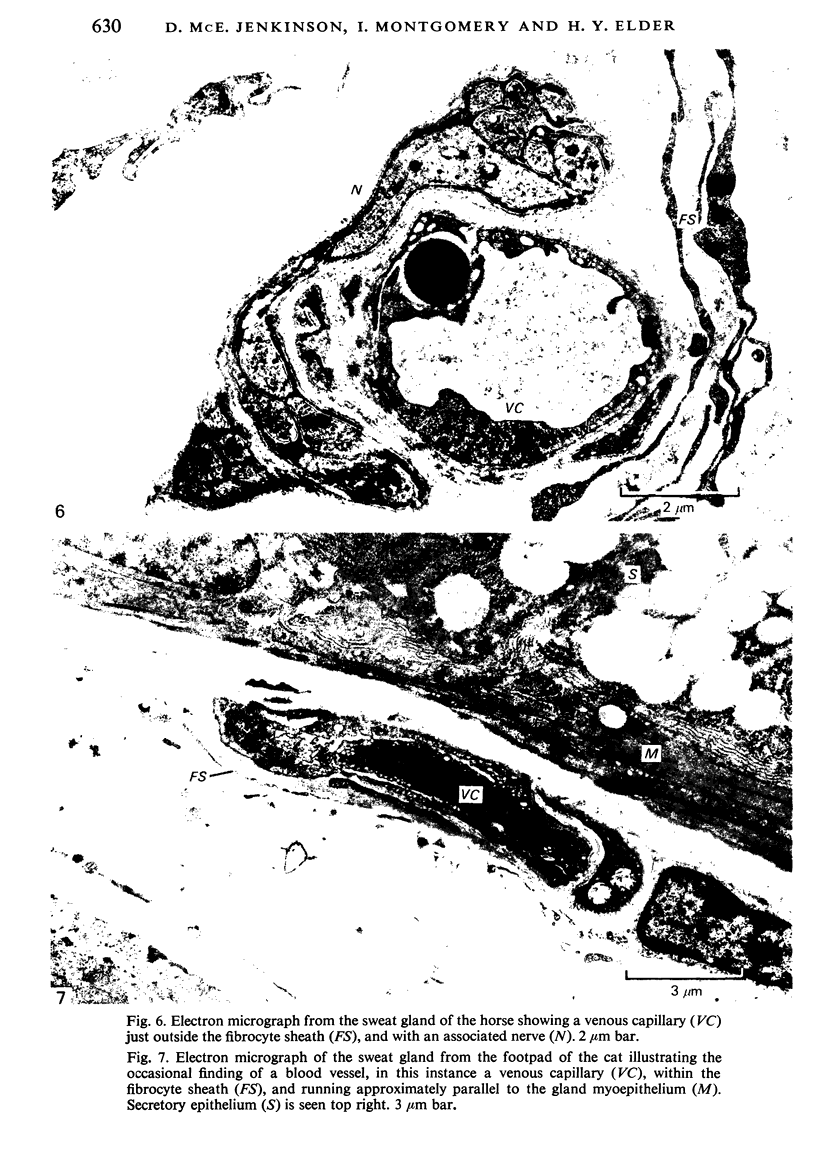
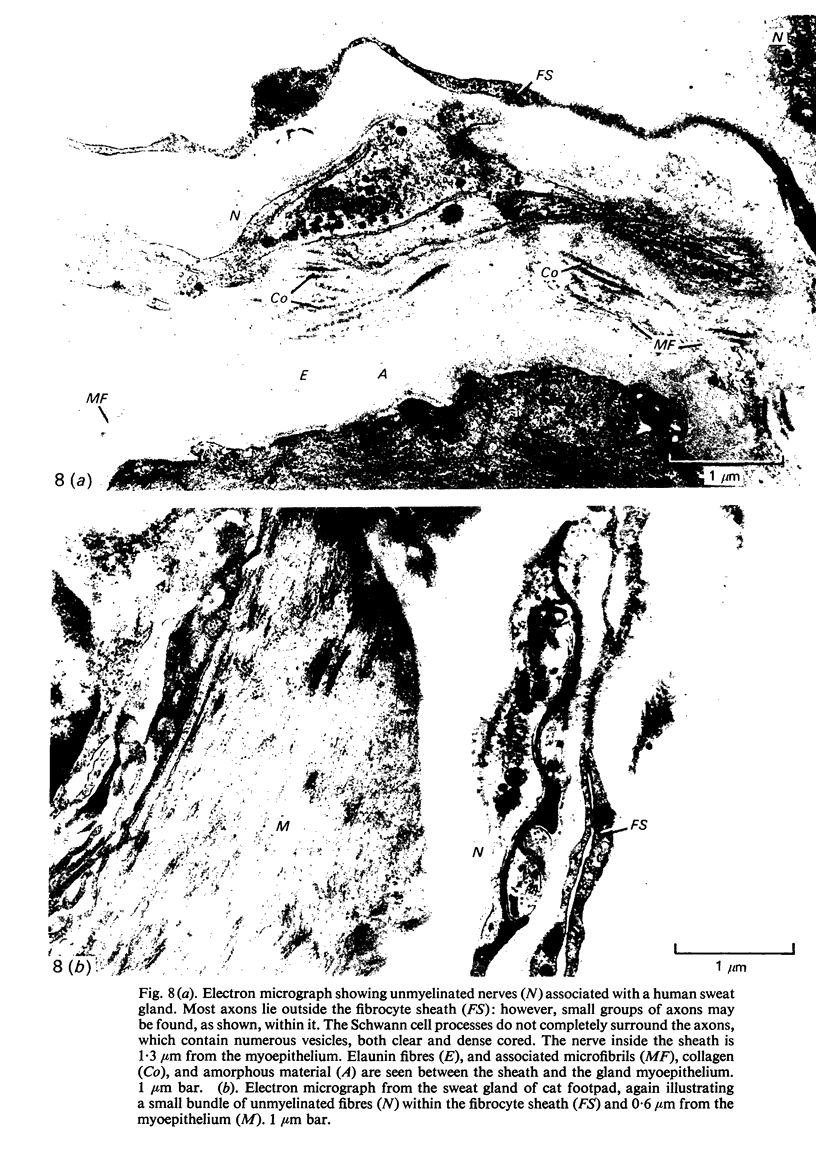
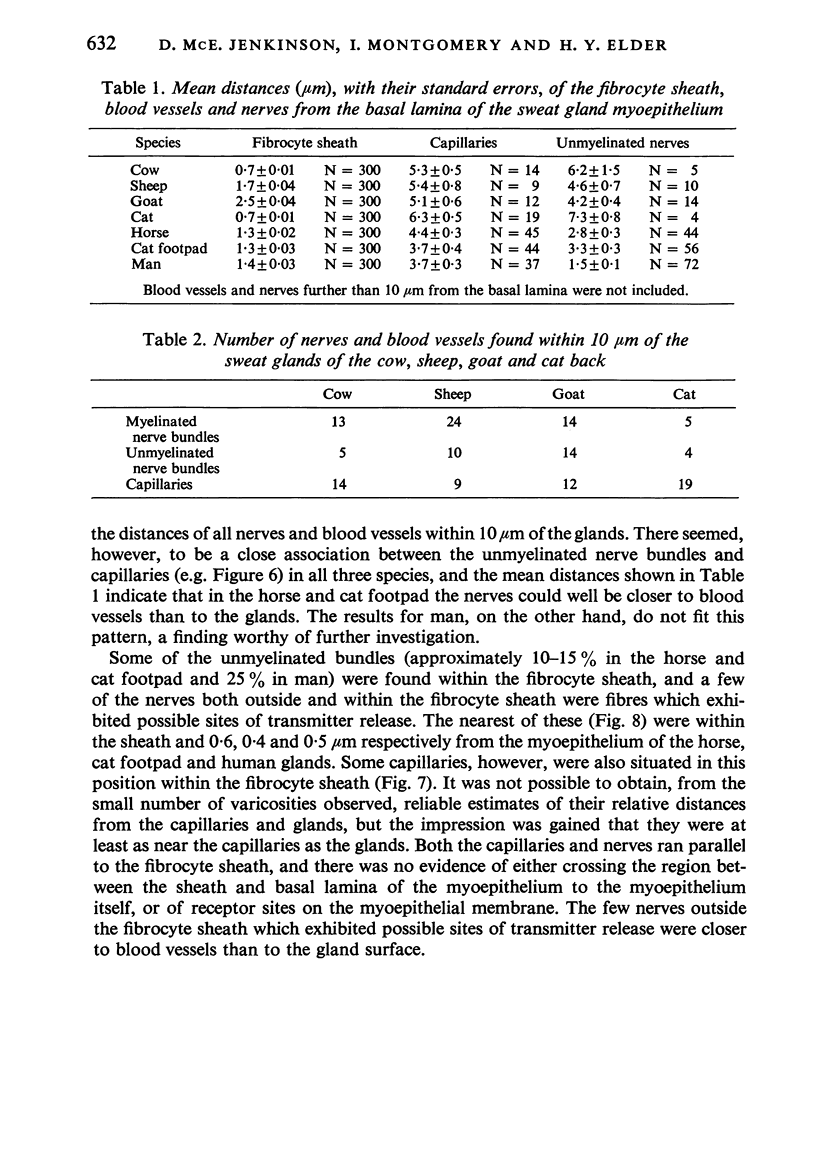
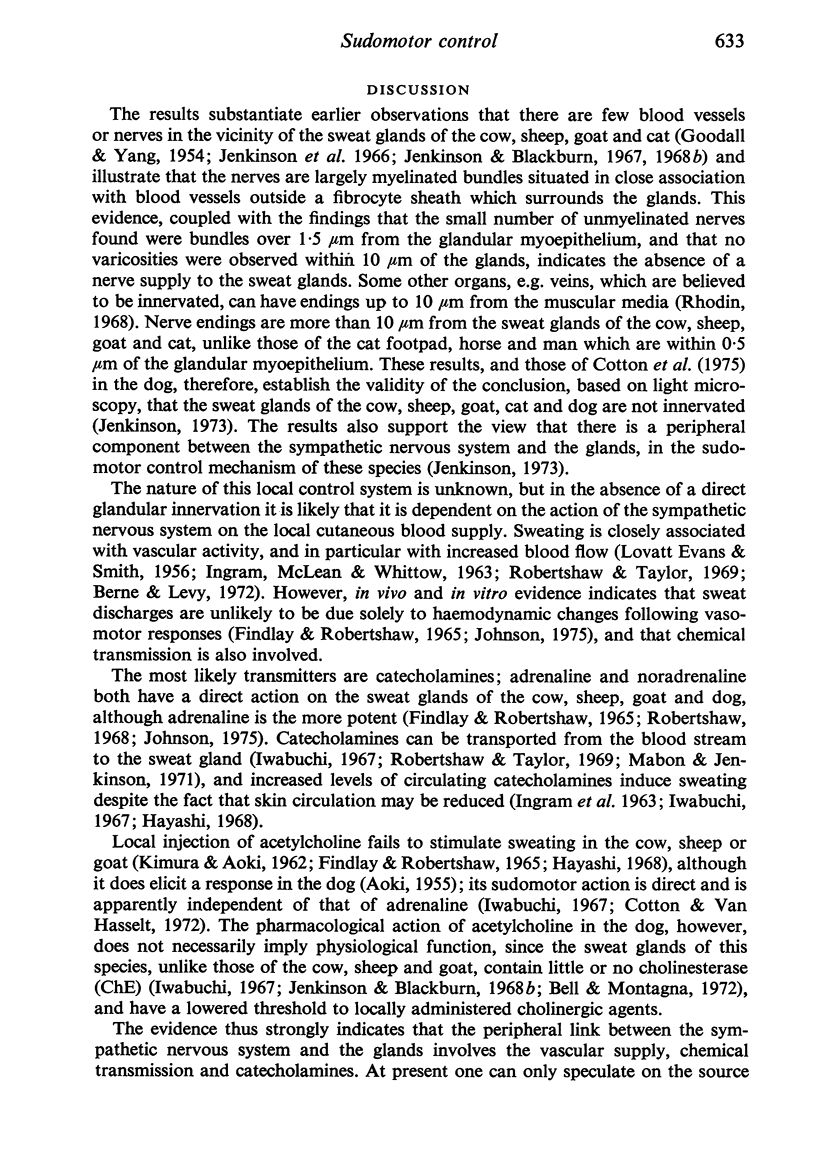
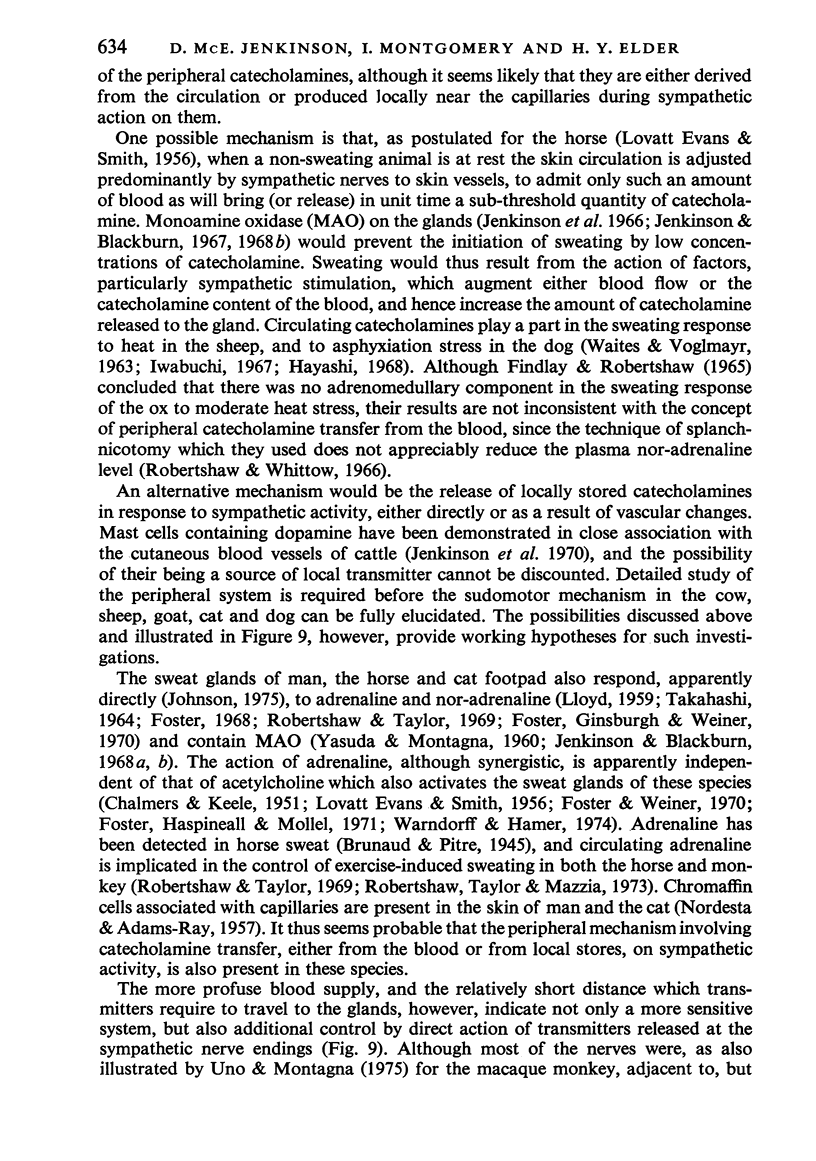
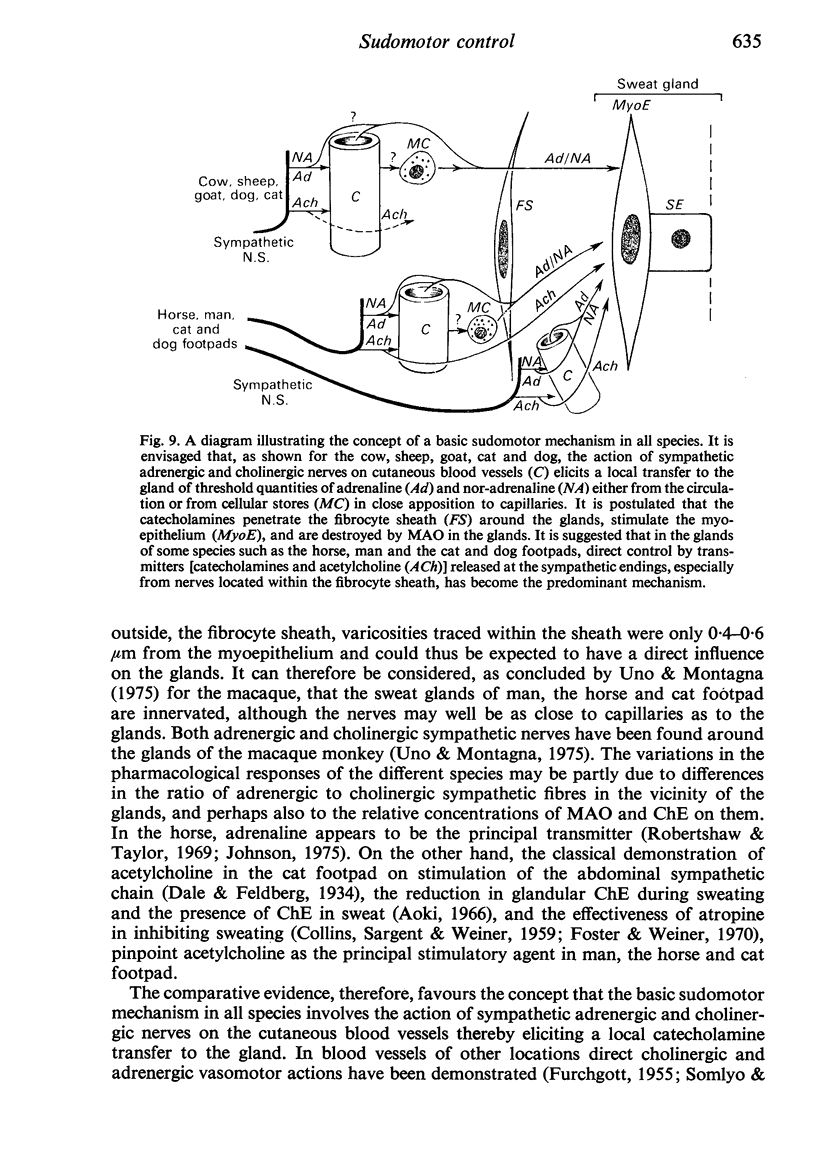
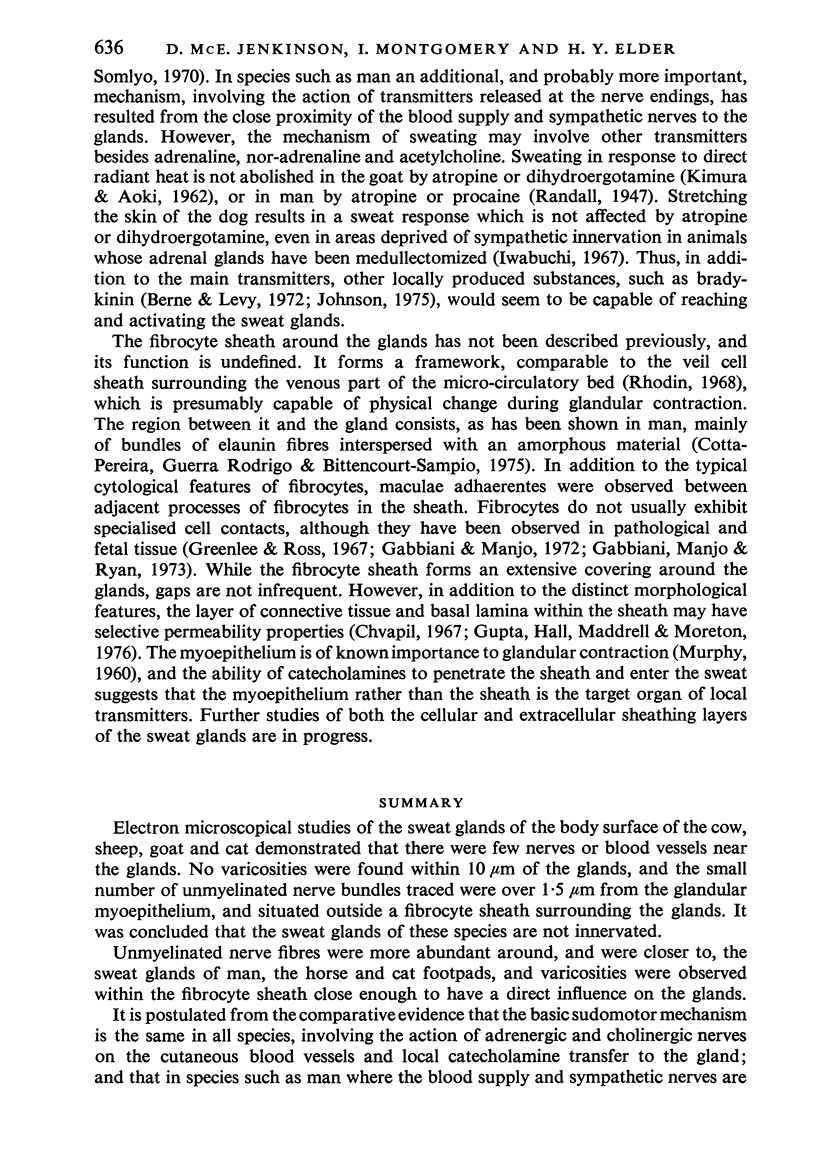
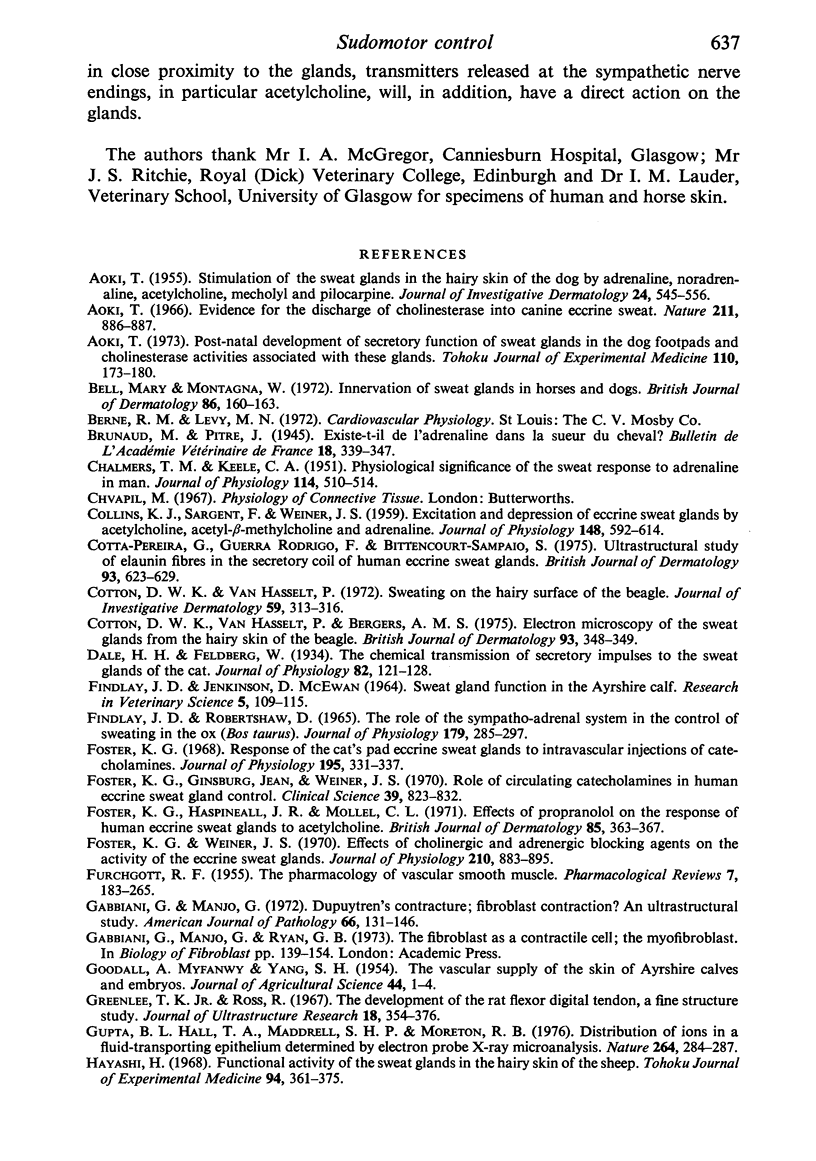
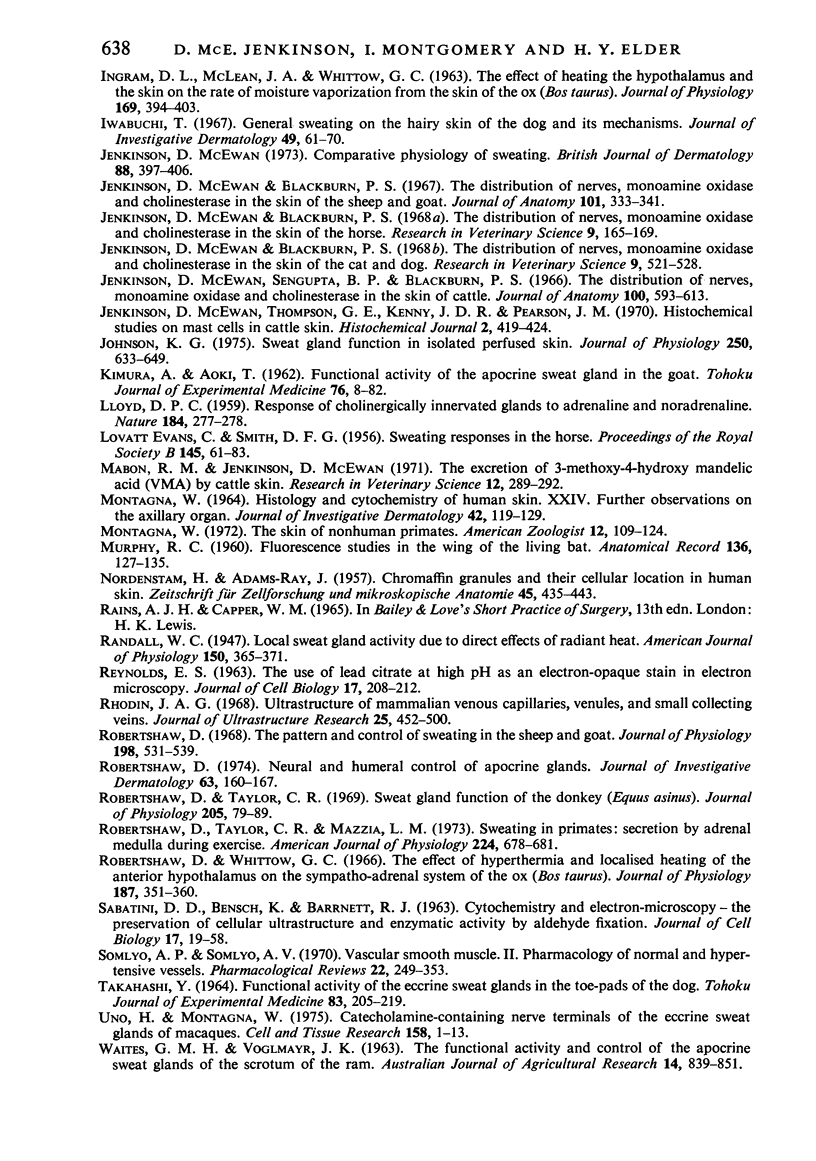
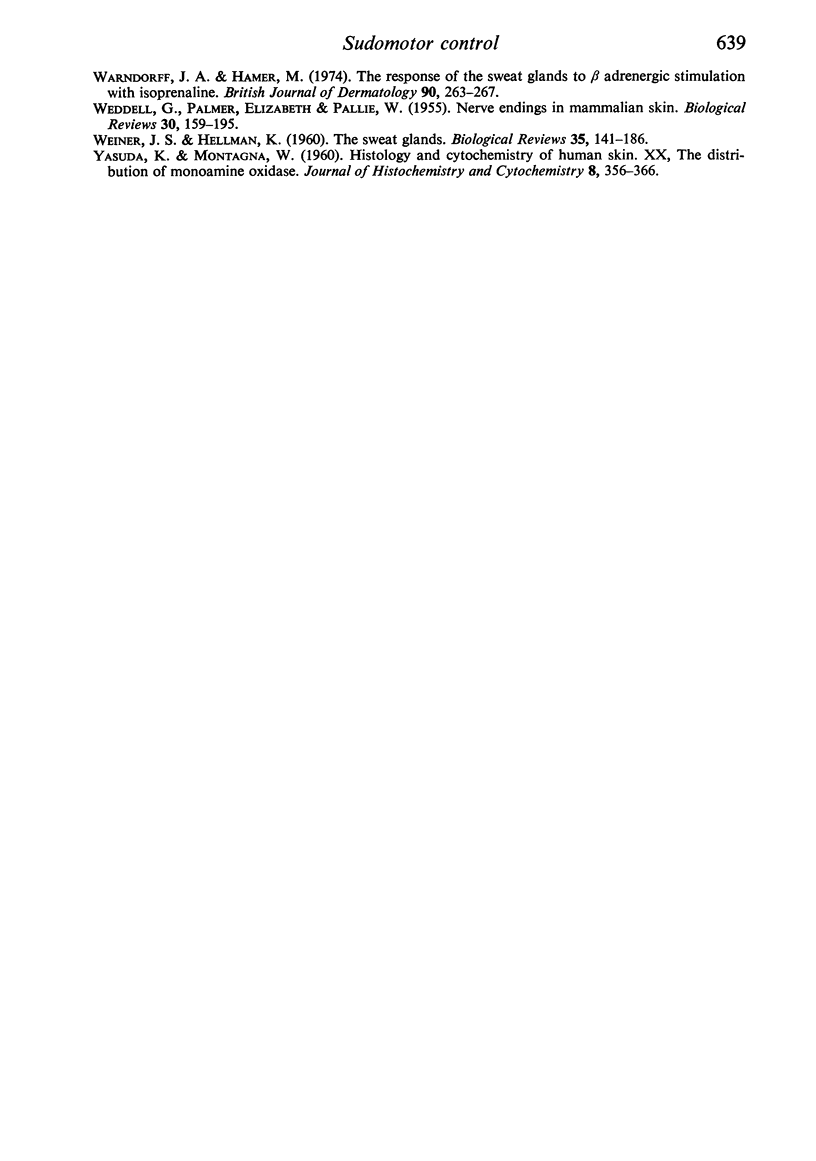
Images in this article
Selected References
These references are in PubMed. This may not be the complete list of references from this article.
- AOKI T. Stimulation of the sweat glands in the hairy skin of the dog by adrenaline, noradrenaline, acetylcholine, mecholyl and pilocarpine. J Invest Dermatol. 1955 May;24(5):545–556. doi: 10.1038/jid.1955.73. [DOI] [PubMed] [Google Scholar]
- Aoki T. Evidence for the discharge of cholinesterase into canine eccrine sweat. Nature. 1966 Aug 20;211(5051):886–887. doi: 10.1038/211886a0. [DOI] [PubMed] [Google Scholar]
- Aoki T. Postnatal development of secretory function of sweat glands in the dog foot pads and cholinesterase activities associated with these glands. Tohoku J Exp Med. 1973 Jun;110(2):173–180. doi: 10.1620/tjem.110.173. [DOI] [PubMed] [Google Scholar]
- Bell M., Montagna W. Innervation of sweat glands in horses and dogs. Br J Dermatol. 1972 Feb;86(2):160–163. doi: 10.1111/j.1365-2133.1972.tb16080.x. [DOI] [PubMed] [Google Scholar]
- CHALMERS T. M., KEELE C. A. Physiological significance of the sweat response to adrenaline in man. J Physiol. 1951 Aug;114(4):510–514. doi: 10.1113/jphysiol.1951.sp004640. [DOI] [PMC free article] [PubMed] [Google Scholar]
- COLLINS K. J., SARGENT F., WEINER J. S. Excitation and depression of eccrine sweat glands by acetylcholine, acetyl-beta-methylcholine and adrenaline. J Physiol. 1959 Oct;148:592–614. doi: 10.1113/jphysiol.1959.sp006309. [DOI] [PMC free article] [PubMed] [Google Scholar]
- Cotta-Pereira G., Guerra Rodrigo F., Bittencourt-Sampaio S. Ultrastructural study of elaunin fibres in the secretory coil of human eccrine sweat glands. Br J Dermatol. 1975 Dec;93(6):623–629. doi: 10.1111/j.1365-2133.1975.tb05111.x. [DOI] [PubMed] [Google Scholar]
- Cotton D. W., Van Hasselt P., Bergers A. M. Electron microscopy of the sweat glands from the hairy skin of the beagle. Br J Dermatol. 1975 Sep;93(3):348–349. doi: 10.1111/j.1365-2133.1975.tb06503.x. [DOI] [PubMed] [Google Scholar]
- Cotton D. W., Van Hasselt P. Sweating on the hairy surface of the beagle. J Invest Dermatol. 1972 Oct;59(4):313–316. [PubMed] [Google Scholar]
- Dale H. H., Feldberg W. The chemical transmission of secretory impulses to the sweat glands of the cat. J Physiol. 1934 Aug 24;82(1):121–128. doi: 10.1113/jphysiol.1934.sp003166. [DOI] [PMC free article] [PubMed] [Google Scholar]
- EVANS C. L., SMITH D. F. Sweating responses in the horse. Proc R Soc Lond B Biol Sci. 1956 Mar 27;144(918):61–83. doi: 10.1098/rspb.1956.0018. [DOI] [PubMed] [Google Scholar]
- FURCHGOTT R. F. The pharmacology of vascular smooth muscle. Pharmacol Rev. 1955 Jun;7(2):183–265. [PubMed] [Google Scholar]
- Findlay J. D., Robertshaw D. The role of the sympatho-adrenal system in the control of sweating in the ox (Bos taurus). J Physiol. 1965 Jul;179(2):285–297. doi: 10.1113/jphysiol.1965.sp007663. [DOI] [PMC free article] [PubMed] [Google Scholar]
- Foster K. G., Ginsburg J., Weiner J. S. Role of circulating catecholamines in human eccrine sweat gland control. Clin Sci. 1970 Dec;39(6):823–832. doi: 10.1042/cs0390823. [DOI] [PubMed] [Google Scholar]
- Foster K. G., Haspineall J. R., Mollel C. L. Effects of propranolol on the response of human eccrine sweat glands to acetylcholine. Br J Dermatol. 1971 Oct;85(4):363–367. doi: 10.1111/j.1365-2133.1971.tb14031.x. [DOI] [PubMed] [Google Scholar]
- Foster K. G. Response of the cat's pad eccrine sweat glands to intravascular injections of catecholamines. J Physiol. 1968 Mar;195(2):331–337. doi: 10.1113/jphysiol.1968.sp008461. [DOI] [PMC free article] [PubMed] [Google Scholar]
- Foster K. G., Weiner J. S. Effects of cholinergic and adrenergic blocking agents on the activity of the eccrine sweat glands. J Physiol. 1970 Nov;210(4):883–895. doi: 10.1113/jphysiol.1970.sp009247. [DOI] [PMC free article] [PubMed] [Google Scholar]
- Gabbiani G., Majno G. Dupuytren's contracture: fibroblast contraction? An ultrastructural study. Am J Pathol. 1972 Jan;66(1):131–146. [PMC free article] [PubMed] [Google Scholar]
- Greenlee T. K., Jr, Ross R. The development of the rat flexor digital tendon, a fine structure study. J Ultrastruct Res. 1967 May;18(3):354–376. doi: 10.1016/s0022-5320(67)80124-2. [DOI] [PubMed] [Google Scholar]
- Gupta B. L., Hall T. A., Maddrell S. H., Moreton R. B. Distribution of ions in a fluid-transporting epithelium determined by electron-probe X-ray microanalysis. Nature. 1976 Nov 18;264(5583):284–287. doi: 10.1038/264284a0. [DOI] [PubMed] [Google Scholar]
- Hayashi H. Functional activity of the sweat glands in the hairy skin of sheep. Tohoku J Exp Med. 1968 Apr;94(4):361–375. doi: 10.1620/tjem.94.361. [DOI] [PubMed] [Google Scholar]
- INGRAM D. L., MCLEAN J. A., WHITTOW G. C. THE EFFECT OF HEATING THE HYPOTHALAMUS AND THE SKIN ON THE RATE OF MOISTURE VAPORIZATION FROM THE SKIN OF THE OX (BOS TAURUS). J Physiol. 1963 Nov;169:394–403. doi: 10.1113/jphysiol.1963.sp007264. [DOI] [PMC free article] [PubMed] [Google Scholar]
- Iwabuchi T. General sweating on the hairy skin of the dog and its mechanisms. J Invest Dermatol. 1967 Jul;49(1):61–70. doi: 10.1038/jid.1967.104. [DOI] [PubMed] [Google Scholar]
- Jenkinson D. M., Blackburn P. S. The distribution of nerves, monoamine oxidase and cholinesterase in the skin of the cat and dog. Res Vet Sci. 1968 Nov;9(6):521–528. [PubMed] [Google Scholar]
- Jenkinson D. M., Blackburn P. S. The distribution of nerves, monoamine oxidase and cholinesterase in the skin of the sheep and goat. J Anat. 1967 Apr;101(Pt 2):333–341. [PMC free article] [PubMed] [Google Scholar]
- Jenkinson D. M., Blackburn P. S. The distribution of nerves, nonoamine oxidase and cholinesterase in the skin of the horse. Res Vet Sci. 1968 Mar;9(2):165–169. [PubMed] [Google Scholar]
- Jenkinson D. M. Comparative physiology of sweating. Br J Dermatol. 1973 Apr;88(4):397–406. doi: 10.1111/j.1365-2133.1973.tb07573.x. [DOI] [PubMed] [Google Scholar]
- Jenkinson D. M., Sengupta B. P., Blackburn P. S. The distribution of nerves, monoamine oxidase and cholinesterase in the skin of cattle. J Anat. 1966 Jul;100(Pt 3):593–613. [PMC free article] [PubMed] [Google Scholar]
- Jenkinson D. M., Thompson G. E., Kenny J. D., Pearson J. M. Histochemical studies on mast cells in cattle skin. Histochem J. 1970 Sep;2(5):419–424. doi: 10.1007/BF01004722. [DOI] [PubMed] [Google Scholar]
- Johnson K. G. Sweat gland function in isolated perfused skin. J Physiol. 1975 Sep;250(3):633–649. doi: 10.1113/jphysiol.1975.sp011074. [DOI] [PMC free article] [PubMed] [Google Scholar]
- KIMURA S., AOKI T. Functional activity of the apocrine sweat gland in the goat. Tohoku J Exp Med. 1962 Feb 25;76:8–22. doi: 10.1620/tjem.76.8. [DOI] [PubMed] [Google Scholar]
- LLOYD D. P. Response of cholinergically innervated sweat glands to adrenaline and noradrenaline. Nature. 1959 Jul 25;184(Suppl 5):277–278. doi: 10.1038/184277a0. [DOI] [PubMed] [Google Scholar]
- MONTAGNA W. HISTOLOGY AND CYTOCHEMISTRY OF HUMAN SKIN. XXIV. FURTHER OBSERVATIONS ON THE AXILLARY ORGAN. J Invest Dermatol. 1964 Jan;42:119–129. doi: 10.1038/jid.1964.24. [DOI] [PubMed] [Google Scholar]
- MURPHY R. C. Fluorescence studies in the wing of the living bat. Anat Rec. 1960 Feb;136:127–135. doi: 10.1002/ar.1091360207. [DOI] [PubMed] [Google Scholar]
- Mabon R. M., Jenkinson D. M. The excretion of 3-methoxy-4-hydroxy mandelic acid (VMA) by cattle skin. Res Vet Sci. 1971 May;12(3):289–292. [PubMed] [Google Scholar]
- NORDENSTAM H., ADAMS-RAY J. Chromaffin granules and their cellular location in human skin. Z Zellforsch Mikrosk Anat. 1957;45(4):435–443. doi: 10.1007/BF00338886. [DOI] [PubMed] [Google Scholar]
- REYNOLDS E. S. The use of lead citrate at high pH as an electron-opaque stain in electron microscopy. J Cell Biol. 1963 Apr;17:208–212. doi: 10.1083/jcb.17.1.208. [DOI] [PMC free article] [PubMed] [Google Scholar]
- Rhodin J. A. Ultrastructure of mammalian venous capillaries, venules, and small collecting veins. J Ultrastruct Res. 1968 Dec;25(5):452–500. doi: 10.1016/s0022-5320(68)80098-x. [DOI] [PubMed] [Google Scholar]
- Robertshaw D. Proceedings: Neural and humoral control of apocrine glands. J Invest Dermatol. 1974 Jul;63(1):160–167. doi: 10.1111/1523-1747.ep12679280. [DOI] [PubMed] [Google Scholar]
- Robertshaw D., Taylor C. R., Mazzia L. M. Sweating in primates: secretion by adrenal medulla during exercise. Am J Physiol. 1973 Mar;224(3):678–681. doi: 10.1152/ajplegacy.1973.224.3.678. [DOI] [PubMed] [Google Scholar]
- Robertshaw D., Taylor C. R. Sweat gland function of the donkey (Equus asinus). J Physiol. 1969 Nov;205(1):79–89. doi: 10.1113/jphysiol.1969.sp008952. [DOI] [PMC free article] [PubMed] [Google Scholar]
- Robertshaw D. The pattern and control of sweating in the sheep and the goat. J Physiol. 1968 Oct;198(3):531–539. doi: 10.1113/jphysiol.1968.sp008623. [DOI] [PMC free article] [PubMed] [Google Scholar]
- Robertshaw D., Whittow G. C. The effect of hyperthermia and localized heating of the anterior hypothalamus on the sympatho-adrenal system of the ox (Bos taurus). J Physiol. 1966 Nov;187(2):351–360. doi: 10.1113/jphysiol.1966.sp008094. [DOI] [PMC free article] [PubMed] [Google Scholar]
- SABATINI D. D., BENSCH K., BARRNETT R. J. Cytochemistry and electron microscopy. The preservation of cellular ultrastructure and enzymatic activity by aldehyde fixation. J Cell Biol. 1963 Apr;17:19–58. doi: 10.1083/jcb.17.1.19. [DOI] [PMC free article] [PubMed] [Google Scholar]
- Somlyo A. P., Somlyo A. V. Vascular smooth muscle. II. Pharmacology of normal and hypotensive vessels. Pharmacol Rev. 1970 Jun;22(2):249–353. [PubMed] [Google Scholar]
- TAKAHASHI Y. FUNCTIONAL ACTIVITY OF THE ECCRINE SWEAT GLANDS IN THE TOE-PADS OF THE DOG. Tohoku J Exp Med. 1964 Aug 25;83:205–219. doi: 10.1620/tjem.83.205. [DOI] [PubMed] [Google Scholar]
- Uno H., Hökfelt T. Catecholamine-containing nerve terminals of the eccrine sweat glands of macaques. Cell Tissue Res. 1975;158(1):1–13. doi: 10.1007/BF00219948. [DOI] [PubMed] [Google Scholar]
- Warndorff J. A., Hamer M. The response of the sweat glands to beta-adrenergic stimulation with isoprenaline. Br J Dermatol. 1974 Mar;90(3):263–268. doi: 10.1111/j.1365-2133.1974.tb06400.x. [DOI] [PubMed] [Google Scholar]
- YASUDA K., MONTAGNA W. Histology and cytochemistry of human skin. 20. The distribution of monoamine oxidase. J Histochem Cytochem. 1960 Sep;8:356–366. doi: 10.1177/8.5.356. [DOI] [PubMed] [Google Scholar]




